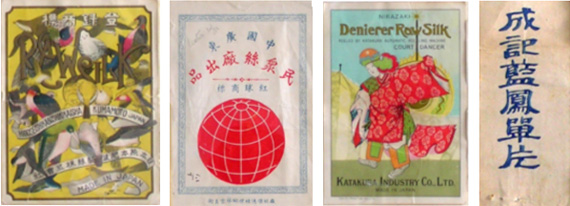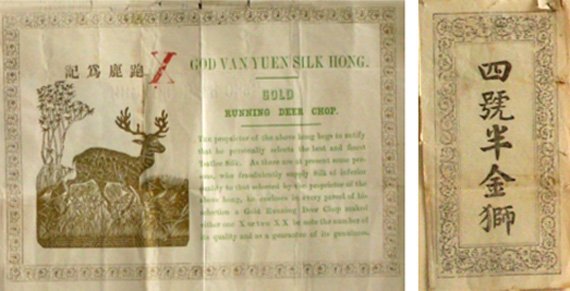The Silk route
Welcome to the Museum area dedicated to Chinese and Japanese labels, which were used to pack raw silk hanks at the beginning of the 20th century.
Paper labels are deemed one of the most popular forms of art. Thanks to images (for instance animals, symbols, landscapes, etc.), they draw people’s attention and arouse their curiosity.
In past times, when the illiteracy rate was quite high, labels used to have a practical purpose; in fact, it was not uncommon for traders to use labels in order to recognise both fabrics and trademarks.
The Silk Route of Como
A number of initiatives, such as congresses organized by the Chamber of Commerce and the European Council on the so-called "Silk Route of Como", highlight the influence of silk production in Como area for both culture and tourism.
The word “route” means a network of Museums, Cultural Institutions, Historical Buildings and Archives showing people the birth and the evolution of silk in Como and on the lake. Moreover, visitors should be given the information they need so as to allow them to make the most of such experience.
Particularly, on the Western shore of Como Lake, the whole silk manufacture process is shown and exhibited at the Educational Silk Museum of Como. Other venues of particular interest are Centro di gelsibachicoltura located in Cassina Rizzardi, Opificio di Carlazzo (now hosting a weaving factory), the former silk reeling mills Comitti (Brienno), Triulzi (Tremezzo), Grandi (Lenno – seat of the Civic Library) and Erba (situated in Pianello del Lario and hosting the museum of boats) and many others.
On the Eastern shore, it is possible to go to the Civic Museum Setificio Monti in Abbadia Lariana, displaying the biggest throwing mill in Europe (restored in the 19th century) and located in an ancient silk reeling mill. Another museum worth visiting is the Silk Museum in Garlate, situated in the former Abegg silk reeling mill and representing the first museum of industrial archaeology in Italy.
Paper labels are deemed one of the most popular forms of art. Thanks to images (for instance animals, symbols, landscapes, etc.), they draw people’s attention and arouse their curiosity.
In past times, when the illiteracy rate was quite high, labels used to have a practical purpose; in fact, it was not uncommon for traders to use labels in order to recognise both fabrics and trademarks.
The Silk Route of Como
A number of initiatives, such as congresses organized by the Chamber of Commerce and the European Council on the so-called "Silk Route of Como", highlight the influence of silk production in Como area for both culture and tourism.
The word “route” means a network of Museums, Cultural Institutions, Historical Buildings and Archives showing people the birth and the evolution of silk in Como and on the lake. Moreover, visitors should be given the information they need so as to allow them to make the most of such experience.
Particularly, on the Western shore of Como Lake, the whole silk manufacture process is shown and exhibited at the Educational Silk Museum of Como. Other venues of particular interest are Centro di gelsibachicoltura located in Cassina Rizzardi, Opificio di Carlazzo (now hosting a weaving factory), the former silk reeling mills Comitti (Brienno), Triulzi (Tremezzo), Grandi (Lenno – seat of the Civic Library) and Erba (situated in Pianello del Lario and hosting the museum of boats) and many others.
On the Eastern shore, it is possible to go to the Civic Museum Setificio Monti in Abbadia Lariana, displaying the biggest throwing mill in Europe (restored in the 19th century) and located in an ancient silk reeling mill. Another museum worth visiting is the Silk Museum in Garlate, situated in the former Abegg silk reeling mill and representing the first museum of industrial archaeology in Italy.




